The Plextor M9Pe NVMe SSD Review: Teaching An Old Chip New Tricks
by Billy Tallis on May 24, 2018 1:00 PM ESTAnandTech Storage Bench - Heavy
Our Heavy storage benchmark is proportionally more write-heavy than The Destroyer, but much shorter overall. The total writes in the Heavy test aren't enough to fill the drive, so performance never drops down to steady state. This test is far more representative of a power user's day to day usage, and is heavily influenced by the drive's peak performance. The Heavy workload test details can be found here. This test is run twice, once on a freshly erased drive and once after filling the drive with sequential writes.
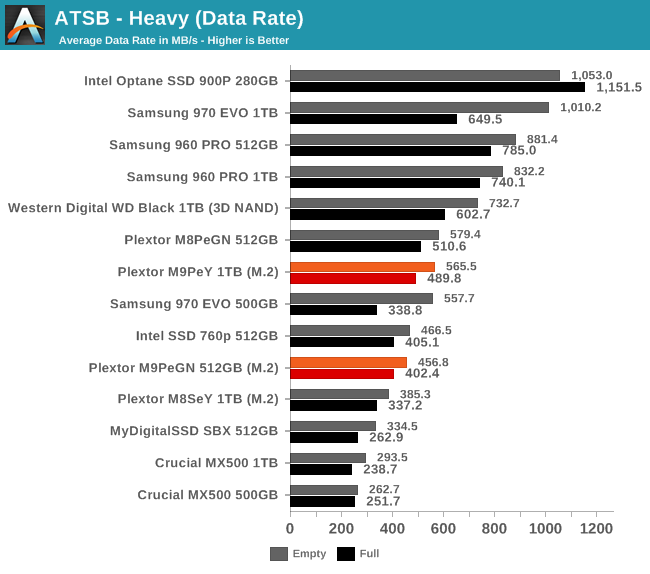
The Plextor M9Pe offers fairly low average data rates on the Heavy test, by the standards of contemporary high-end SSDs. However, it doesn't lose too much performance when full, which allows the 512GB model to score a win over the 500GB Samsung 970 EVO.
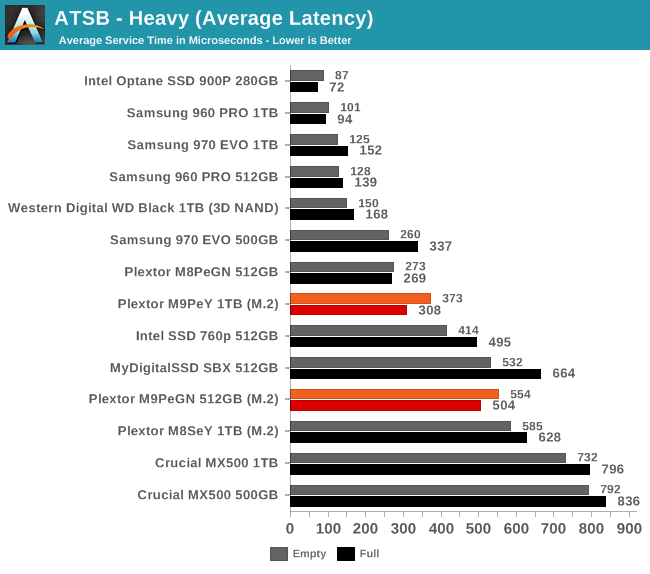
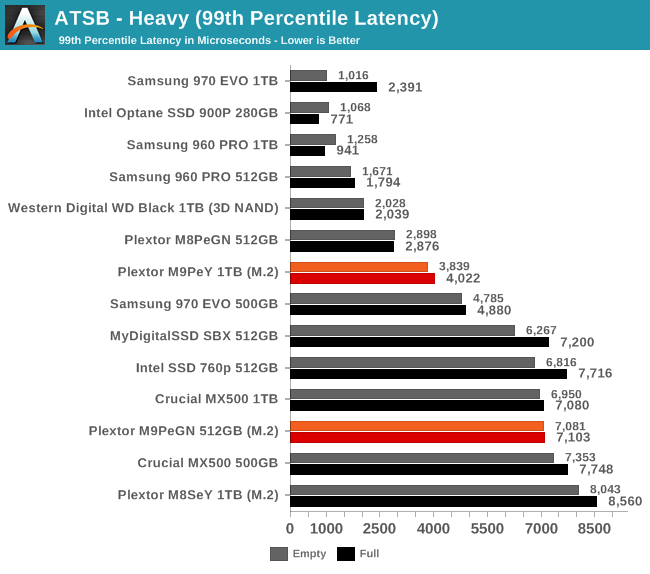
The average latency scores from the M9Pe place it at the bottom of the NVMe segment, but still ahead of the SATA drives. The 99th percentile scores of the 1TB model are worse than the other 1TB NVMe drives but not too bad overall, while the 512GB M9Pe is nearly tied with the Crucial MX500 SATA drive.
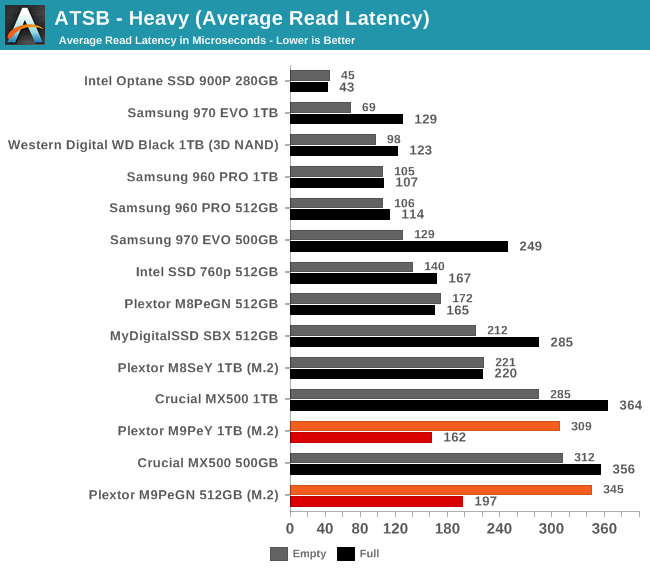
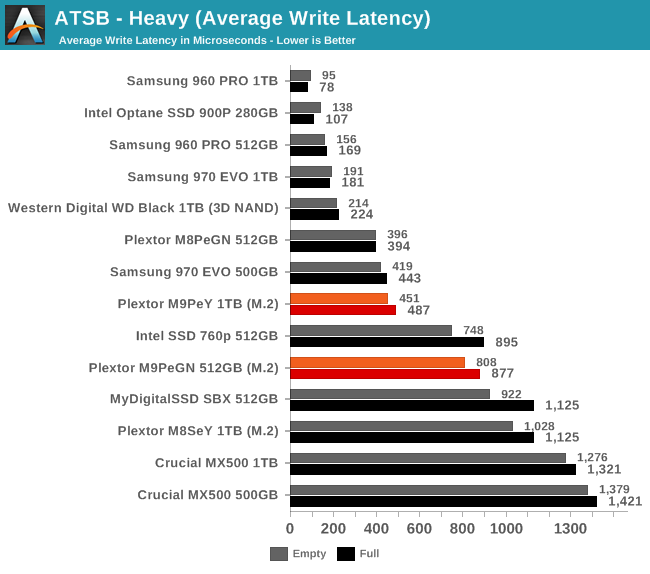
The average read latency scores from the Plextor M9Pe show an unusual inversion, with better performance when the drive is full. Anomalies like this are often an artifact of the drive lying about when it's done with a secure erase operation, leading to the empty-drive test run starting too soon. Even discounting those results, the M9Pe doesn't look competitive. The average write latency scores look more sensible, but are also bad news for the M9Pe's aspirations to high-end status.
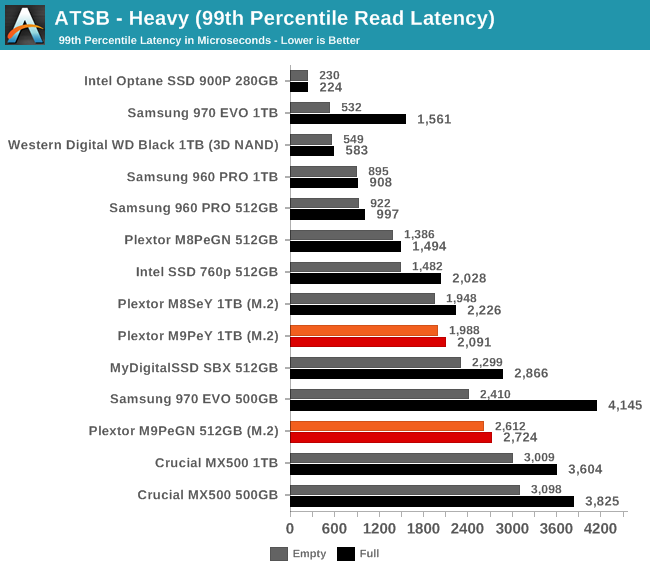
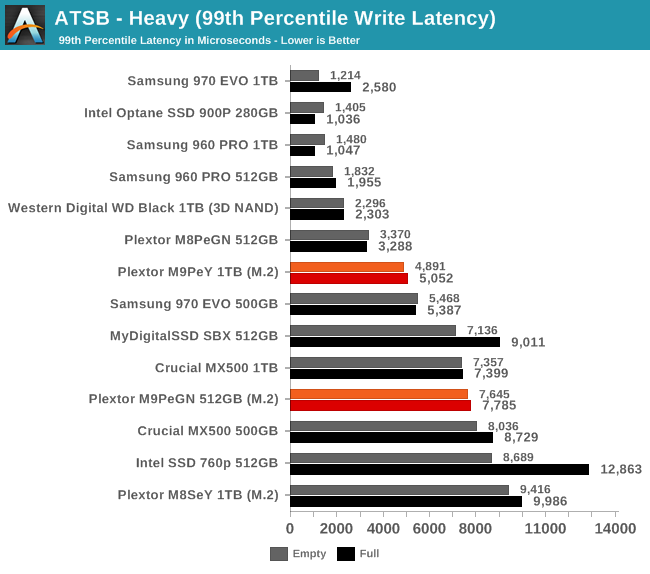
None of the 99th percentile read or write latency scores from the Plextor M9Pe are actually good by the standards of a current-generation high-end SSD, but the M9Pe does avoid the problems that befall some of the drives when they're full.
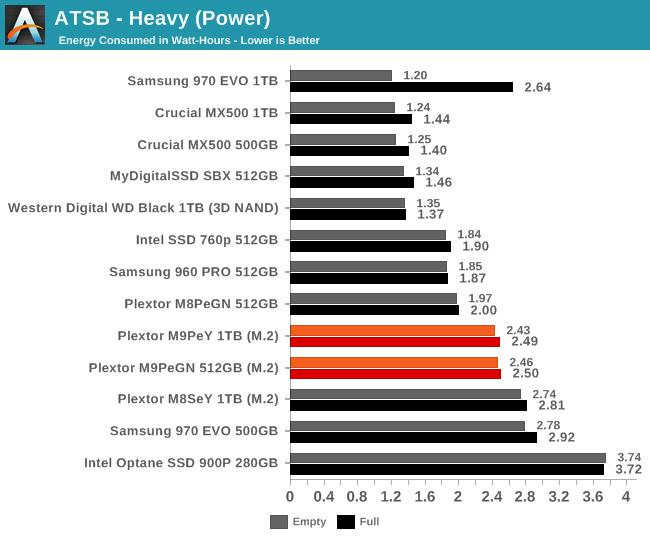
Energy usage from the M9Pe again falls between the results from its MLC and TLC based predecessors, and aren't great overall. The 500GB Samsung 970 EVO also requires a lot of energy, while its larger counterpart does quite well when its SLC cache isn't filled.










15 Comments
View All Comments
Yuriman - Thursday, May 24, 2018 - link
Looks like that heatspreader does it a lot of good.peevee - Tuesday, May 29, 2018 - link
But the price of it? I understand it for $4 on 256GB model. But why the same thing is closer to $40 on 1T?romrunning - Thursday, May 24, 2018 - link
Regarding the testing platform: "The Windows 10 version will still be 1709, because Microsoft has not yet fixed all the new bugs introduced in the NVMe driver in Windows 10 version 1803."If you're referring to the issues with Intel 600p drives in the April Update (version 1803), Microsoft released a new patch (KB4100403) that "Addresses an issue with power regression on systems with NVMe devices from certain vendors."
So it sounds like you should be able to update Windows to 1803 as long as you include that patch.
Billy Tallis - Thursday, May 24, 2018 - link
That's not the only problem that's been reported with 1803's NVMe driver. I don't trust that they've even found all the new bugs yet, let alone patched them all. And I actually started running the new tests almost a month ago, to try to minimize the interruption to our review schedule.Drazick - Thursday, May 24, 2018 - link
Are you sure it is Microsoft's issue and not the firmware of those drives?Billy Tallis - Thursday, May 24, 2018 - link
In the absence of a proper changelog from Microsoft, I assume the new issues are mostly their fault. At the very least, they're responsible for upsetting whatever fragile balance of bugs the SSD manufacturers have achieved by testing against previous versions of Windows 10. I want to freeze my testbed software configuration for at least a year, and there's sufficient reason to consider 1803 as still being essentially beta-quality and thus a bad choice for the 2018 SSD test suite.GeorgeH - Thursday, May 24, 2018 - link
FWIW that's very reasonable. It's utterly foolish to update to any Windows 10 version until at least 6 months after release (unless your time is worthless and you'd like to do free QA for Microsoft, of course).lmcd - Thursday, May 24, 2018 - link
Not even close to true. In fact, it's because I value my time that I upgraded to 1803 immediately. 1803 adds the "Windows Hypervisor Platform" to its features, which (as a primary effect) allows Docker for Windows and a buggy-but-usable Xamarin variant of AVD to run side-by-side (along with other Hyper-V images). It's possible we even see VirtualBox run on this excellent feature, though I don't know if it's on their roadmap yet.smilingcrow - Friday, May 25, 2018 - link
Which is an irrelevant feature for most home users so your post is myopic.Death666Angel - Friday, May 25, 2018 - link
If you are running normal consumer grade hardware, I don't think that is the case.